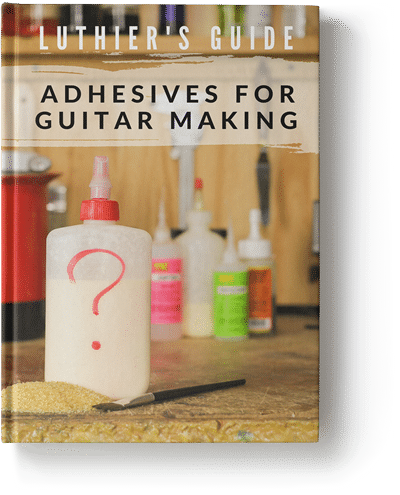 Maybe you never really thought about it much or just used whatever adhesive was recommended in your instructional lutherie book or course, which is a great place to start – I know I started out that way.
Maybe you never really thought about it much or just used whatever adhesive was recommended in your instructional lutherie book or course, which is a great place to start – I know I started out that way.
But as I grew as a luthier and gained experience, I began to discover a secret that helped me improve and refine my guitars. I found that by carefully choosing the best possible adhesives specifically suited for each part of the guitar, I could improve both the structural/functional properties of my guitars AND noticeably improve the sound of my guitars at the same time!
Most people understand the importance of having a glue that is strong enough to hold the guitar together, and that the glue must have the right working time or cure time needed for a specific part of the guitar, I got that part. However, as the years went by and I built more and more guitars, I started developing a more refined sense of how each different glue was influencing the sound of each part and even the final voice of the finished guitar. I could hear the glue!
Now after experimenting with every glue I could find on over 100 guitars, I have a set of glues that have proven to be the optimum choices for each individual application based on structural properties, cure time, AND the way that they affect and help to shape the final voice of my guitars.
Before we get into that part let’s start by looking at the main types of adhesives for guitar making and the most commonly used glues.
Basic Types Of Adhesives For Building Guitars
If you’ve read my guitar making book or any of my lutherie articles, you might already know that I’m a fan of pushing the envelope. BUT that being said, I always build a strong foundation on the tradition first. By tradition I mean, what other great men and women before me have tested and proved and invested their lives to learn. I need to understand that first, otherwise I’m starting over from scratch and it could take me a lifetime to get to the point where they left off, that would be crazy right?
As luthier’s we have the privilege of accessing the wealth of knowledge left to us as an inheritance to use as our starting point. From there we can explore and endeavor to add our own unique chapter to the living chronicle of the guitar as it evolves and grows with us collectively.
With that in mind let’s start off by looking at the types of wood glue that have been successfully used by many great luthiers to build their wonderful creations that still inspire the music of guitar players and music lovers around the world. These form the basis of our palette of adhesives that we can draw from as we find just the right glue for each part of the guitar for function AND sound.
Animal Glues (Protein Colloid)
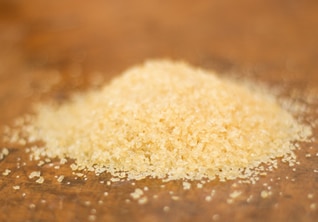 This is the traditional glue for luthiers. For centuries animal based glues were all they had to use, but don’t feel too bad for the luthiers of old, it’s amazing stuff and still widely regarded as the best for many different applications. Animal based glues are made from the tissue, skin, and bones of animals similar to gelatin. These glues can be sold in a granular form that needs to be mixed and heated or liquid form ready for use out of the bottle. This is some amazing and great sounding glue with an impressive set of features such as; zero cold creep (thermoplastic creep), easy reactivation for repairs, and superior sound transfer.
This is the traditional glue for luthiers. For centuries animal based glues were all they had to use, but don’t feel too bad for the luthiers of old, it’s amazing stuff and still widely regarded as the best for many different applications. Animal based glues are made from the tissue, skin, and bones of animals similar to gelatin. These glues can be sold in a granular form that needs to be mixed and heated or liquid form ready for use out of the bottle. This is some amazing and great sounding glue with an impressive set of features such as; zero cold creep (thermoplastic creep), easy reactivation for repairs, and superior sound transfer.
Trade Names: Hide Glue (Milligan & Higgons), Norland High Tack Fish Glue,
PVA / Aliphatic Resin ( Polyvinyl Acetate )
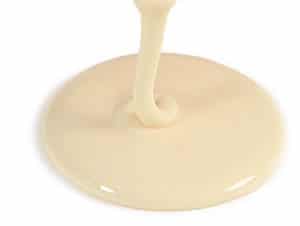 Probably the most commonly used type of wood glue in the world, the PVA family of glues which includes white glue and the closely related (though with much better characteristics than standard PVA) Aliphatic Resin glue (yellow glue). The yellow glue especially lends itself very well to guitar making which explains its popularity. These qualities (which can vary by actual brand of glue) can include; good working time, quick set, short clamping time, easy clean up, resistance to cold creep (aka thermoplastic creep), and more.
Probably the most commonly used type of wood glue in the world, the PVA family of glues which includes white glue and the closely related (though with much better characteristics than standard PVA) Aliphatic Resin glue (yellow glue). The yellow glue especially lends itself very well to guitar making which explains its popularity. These qualities (which can vary by actual brand of glue) can include; good working time, quick set, short clamping time, easy clean up, resistance to cold creep (aka thermoplastic creep), and more.
Trade Names: Tightbond Original, Elmers, LMI FGX
Epoxy (Polyepoxides)
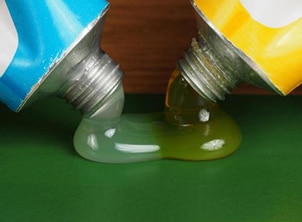 Epoxy is a two-part adhesive resin that is available in hundreds of different variations for temperature ranges, strengths, and viscosities. It shines in its great gap filling ability, control over curing time, and in many cases its ability to bind well to oily woods. It’s often used for laminating veneers, gluing parts where avoiding water in the glue joint (from water based or water curing glues) is beneficial, pore filling, and more.
Epoxy is a two-part adhesive resin that is available in hundreds of different variations for temperature ranges, strengths, and viscosities. It shines in its great gap filling ability, control over curing time, and in many cases its ability to bind well to oily woods. It’s often used for laminating veneers, gluing parts where avoiding water in the glue joint (from water based or water curing glues) is beneficial, pore filling, and more.
Trade Names: West System, Zpoxy, Superbond, Smith
Polyurethane
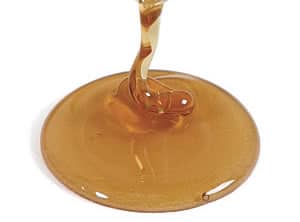 This type of glue is probably the newest of the group listed here, but they are rapidly gaining popularity due to their unique properties. One of the most fascinating things about this glue to me is the fact that while most glues cure as the moisture content is removed (while it dries), the polyurethane glues cure with the addition of the water content…the water content actually causes the reaction that cures the glue. The implications of this are awesome..it means you can use it in situations where the wood will be exposed to water and heat…hmmm , bring anything to mind?
This type of glue is probably the newest of the group listed here, but they are rapidly gaining popularity due to their unique properties. One of the most fascinating things about this glue to me is the fact that while most glues cure as the moisture content is removed (while it dries), the polyurethane glues cure with the addition of the water content…the water content actually causes the reaction that cures the glue. The implications of this are awesome..it means you can use it in situations where the wood will be exposed to water and heat…hmmm , bring anything to mind?
Trade Names: Gorilla Glue, Tightbond Polyurethane
Cyanoacrylate
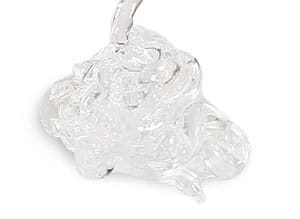 Commonly known as super glue, cyanoacrylate has quickly become one of the most popular adhesives for woodworkers in many different fields. It is available in several different versions designed for specific gluing purposes. The thinner version is useful for wicking into tight fitting joints, and thicker versions are useful for joints that may have small gaps or irregularities. When cured cyanoacrylate is essentially a plastic and in many cases can have a bond stronger than wood. It cures quickly and can be made to cure instantly with the use of an accelerator spray.
Commonly known as super glue, cyanoacrylate has quickly become one of the most popular adhesives for woodworkers in many different fields. It is available in several different versions designed for specific gluing purposes. The thinner version is useful for wicking into tight fitting joints, and thicker versions are useful for joints that may have small gaps or irregularities. When cured cyanoacrylate is essentially a plastic and in many cases can have a bond stronger than wood. It cures quickly and can be made to cure instantly with the use of an accelerator spray.
Trade Names: Zap, Zap-A-Gap, Satellite City, Superglue
Cement Adhesive (Nitrocellulose Solution)
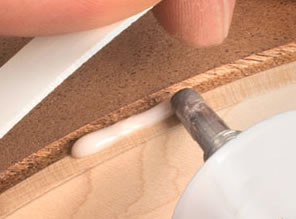 The most commonly used version of this is called Duco Cement and is widely used for building models and other similar applications. It’s main purpose in guitar making is gluing plastic binding to the guitar body and other parts. It can be very toxic, have a strong odor, and can damage any nitrocellulose finish. Be sure to use this in a well-ventilated area and take caution. I mostly use wood bindings for my guitars so I don;t use this much, but in certain cases it’s a must have. Like when I did a repair to one of Jimmy D’Aquisto’s guitars a few years ago. I had to use this glue so that I could use the same type of binding material that Jimmy used when he built the guitar originally, so it is an important part of the luthiers pallet to have on hand for specific purposes.
The most commonly used version of this is called Duco Cement and is widely used for building models and other similar applications. It’s main purpose in guitar making is gluing plastic binding to the guitar body and other parts. It can be very toxic, have a strong odor, and can damage any nitrocellulose finish. Be sure to use this in a well-ventilated area and take caution. I mostly use wood bindings for my guitars so I don;t use this much, but in certain cases it’s a must have. Like when I did a repair to one of Jimmy D’Aquisto’s guitars a few years ago. I had to use this glue so that I could use the same type of binding material that Jimmy used when he built the guitar originally, so it is an important part of the luthiers pallet to have on hand for specific purposes.
Trade Names: Duco Cement, Bind-ALL Guitar Binding Glue
Most Common Glues For Building Guitars
Franklin Tightbond Original
This glue is possibly the most used of all the glues and for a very long time it was the main glue I used to build my guitars. As far as I can remember the only thing I didn’t use it for was doing the inlay. I still use it but only for very specific applications. This glue bonds stronger than wood, has a fast initial tack relatively short clamping time (as little as 1 hour), nontoxic, and water cleanup.
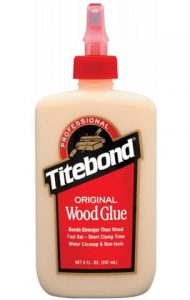 Learn more about this glue: here
Learn more about this glue: here
Common Applications
- Wood to wood joints
- Structural joints
- Wood bindings & Purflings
- Laminations (headstocks etc.)
- Fingerboard gluing
- Guitar Braces (tone bars)
- Most wood joints on the guitar
Type of Glue: Aliphatic resin
LMI Yellow Instrument Makers Glue FGX
This glue is formulated specifically for luthiers and claims to have some great properties such as curing harder than the other types of yellow glues, easier sanding, and easier cleaning up too. They don’t list what type of glue it is but I am guessing it is an Aliphatic Resin based glue related to the Tightbond Original glue mentioned earlier. One unique feature is the UV dye that is added to allow for using a black light to see places where glue is still on the surface – very handy when preparing for staining and finishing. You can learn more about this glue or purchase it here: https://www.lmii.com/lmi-yellow-instrument-glue-fgx
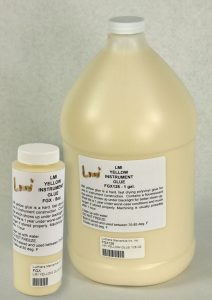 Learn more here
Learn more here
Common Applications
- Wood to wood joints
- Structural joints
- Wood bindings & Purflings
- Laminations (headstocks etc.)
- Fingerboard gluing
- Guitar Braces (tone bars)
Type of Glue: Aliphatic resin
Hot Hide Glue (granular – Milligan & Higgons 192g)
Hot hide glue or simply “hide glue” has been famous for being the luthiers choice in both guitars and violin family instruments for centuries. It dries very hard and is not susceptible to thermal plastic creep like many of the modern PVA glues. Because of its superior hardness it can improve the sound of a guitar when used to glue the braces to the face of a guitar, however it does have some drawbacks such as the fact that it requires preparation in the form of mixing heating and holding it at a constant specific temperature to preserve its strength and usability. Hide glue also has a very short working time usually less than one minute in most environments to position the pieces together before the glue sets.
You can find some great info about hide glue, how to prepare it, and how to use it here: Using Hide Glue
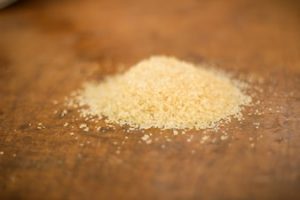 Larger quantities can be purchased here
Larger quantities can be purchased here
Smaller amounts here
Common Applications
- Wood to wood joints
- Structural joints
- Fingerboard gluing
- Guitar Braces (tone bars)
Type of Glue: Animal
Norland High Tack Fish Glue
Fish glue is closely related to hide glue but is usually made from the air bladders of certain fish. I remember when I was studying with Boaz Elkayam he told me how to make fish glue, but I never tried it mainly because where I live is about as far away from an ocean as possible. This liquid fish glue is one of the most used on the market and offers some unique qualities such as a longer working time and fast tack.
 Learn more about this glue here
Learn more about this glue here
Common Applications
- Wood to wood joints
- Structural joints
- Fingerboard gluing
- Guitar Braces (tone bars)
Type of Glue: Animal
West System Epoxy
This epoxy is used by boat builders worldwide and is one of the industry standards for quality and dependability. West epoxy is a thin viscosity and works well for laminating and even treating wood to strengthen it and prevent cracks. The resulting film is somewhat flexible but very hard, perfect for many guitar making applications. West epoxy resin can be mixed with the 105 or 205 hardeners for a slow or fast cure time. It can be thickened using thickening powders and can be easily dispensed in the proper ratios using the special pumps designed for each container size (a huge time saver).
Learn more Here
Common Applications
- Wood to wood joints
- Structural joints
- Laminations
- Fingerboard gluing
- Inlay
- Carbon Fiber neck rods
Type of Glue: Epoxy
Smith Epoxy
This epoxy is formulated especially for use on oily woods such as cocobolo and some ebonies. It has a thin viscosity to enable it to soak into the wood deeper and create a very strong joint. It has a 2 hour pot life and a full cure in 24hrs at room temperature.
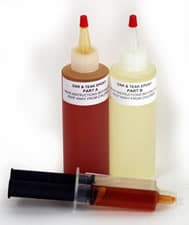 Learn more here
Learn more here
Common Applications
- Wood to wood joints
- Structural joints
- Laminations
- Fingerboard gluing
- Inlay
- Carbon Fiber neck rods
- Oily Woods (ex. Cocobolo)
Type of Glue: Epoxy
Z-Poxy Finishing Resin
Many builders use this epoxy for filling wood pores prior to finishing to speed up the process and get a glassy and filled surface. This epoxy is designed for this purpose and has some features that make it work very well such as forgiving mix ratios, easy sanding, clear color, and a 3hr cure time.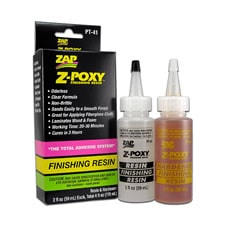 Learn More Here
Learn More Here
Common Applications
- Pore filling
Type of Glue: Epoxy
Super Bond Epoxy
Super Bond is a thixotropic epoxy paste that has unbelievable strength. It is commonly used for laminating the masts of large ships and other critical structural boat building applications where strength is critical. Because of it’s thicker viscosity, this epoxy is great for applications where you don’t want the glue running out and making a mess as well as applications where gap filling is important. Very easy to mix with a forgiving 1:1 ratio.
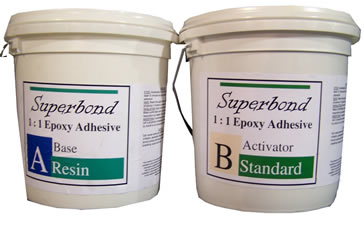 Learn More Here
Learn More Here
Common Applications
- Wood to wood joints
- Structural joints
- Laminations
- Fingerboard gluing
- Inlay
- Carbon Fiber neck rods
Type of Glue: Epoxy
Gorilla Glue
This glue is a water activated polyurethane that is heat resistant and when cured is 100% waterproof. Expands to 3 times its size as it cures and penetrates deep into the wood fibers for a strong bond. Cleans up with denatured alcohol, sands easily, and is claimed to be “the strongest glue on earth”.
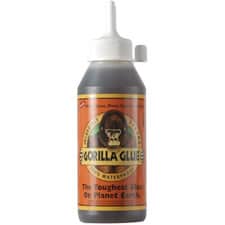 Learn More Here
Learn More Here
Common Applications
- Wood to wood joints
- Structural joints
- Laminations
- Fingerboard gluing
- Gluing oily woods
Type of Glue: Polyurethane
Zap CA
The Zap line of CA glues are used for many industrial applications including guitar making and are available in several viscosities and can also be used with accelerator for an instant cure. Each viscosity is good for different applications; The thin penetrating viscosity cures in tight joints in 1-5 seconds to form a strong bond and can wick into the tightest spaces of pre-assembled joints. The medium cures a bit slower and works well for joints with some small gaps and that require longer assembly times.
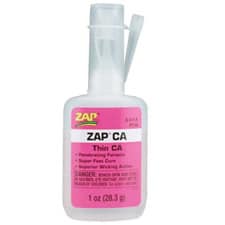 There are many other brands of CA glue so you can use whatever kind you find works the best for you, this happens to be my CA of choice. Learn more Here
There are many other brands of CA glue so you can use whatever kind you find works the best for you, this happens to be my CA of choice. Learn more Here
Common Applications
- Wood bindings
- Purfling
- Inlay
- Fretwork
Type of Glue: Cyanoacrylate
Bind-ALL Guitar Binding Glue
This is one of many different types of glues designed to glue plastic bindings onto the wooden guitar body. It sets in about 2 minutes and fully cures in 12 hrs which is really great for this type of glue and can really help you get your plastic bindings installed.
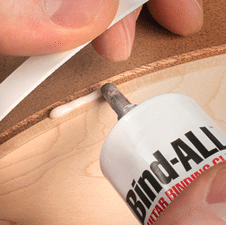 This glue is not recommended for installing wooden bindings but for plastics only. Learn more Here
This glue is not recommended for installing wooden bindings but for plastics only. Learn more Here
Common Applications
- Plastic Binding installation
Type of Glue: Nitrocellulose Solution
So What Is the Best Glue For Guitar Building?
Now that I listed many of the most commonly used glues for guitar building and some of their common applications above, you may have noticed that there is a lot of overlap in the different parts of the guitar they can be used for and you might be wondering:
How do you decide which ones to use where?
Are you using the best glue for your guitar building?
How do you go about choosing the best adhesives?
And what is the best glue for guitar building?
Like so many things in the art of lutherie, there is no one best wood, or best finish, or best glue, it’s about finding which one is the best for you, your guitars, and your style of building. Any of the glues mentioned here work well, but now that you know about these great options listed here and understand more about how they work and their strengths, you can start your journey to determining which glue is the best for YOUR guitars and YOUR building style. Many years ago, I put together a list like the one above and began experimenting.
Over 100 guitars later, I have identified which glues work the best for each joint of my guitars.
Want a copy of my list?
If you’re a member of the Luthier’s EDGE you can log in to access the full guide now, or see below for more info on my Luthier’s Guide Series resource; Adhesives For Guitar Making, where I give you my personal list of go-to glues for each part of the guitar and walk you through each step I used to identify the key criteria for each glue joint, and then set up experiments to test glues and find just the perfect adhesive for each part of my guitar.
Here’s the great part: The Luthier’s Guide: Adhesives for Guitar Making is included in your Luthier’s EDGE membership along with every other tutorial, video course, and more.
To learn more about accessing this guide and our growing luthier training library click here.
Adhesives For Guitar Making
Learn how you can improve your guitars by choosing the best adhesive for each part, what glue works best, how these choices can improve your guitars in strength AND sound, and much more.

- Tom’s Personal List Of Adhesives & Applications
- Types Of Glue For Luthier’s
- Most Commonly Used Glues
- Traditional Applications
- Links To Glue Suppliers
- Effect Of Glue On Sound
- Photo Tutorial Demonstrations
- Video Tutorial Demonstrations
- Criteria For Optimum Glue Choice
- How To Choose The Best Glue
- 30 Pages
Adhesives For Guitar Making



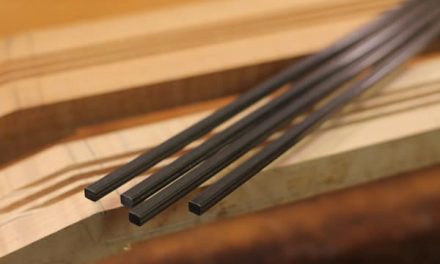

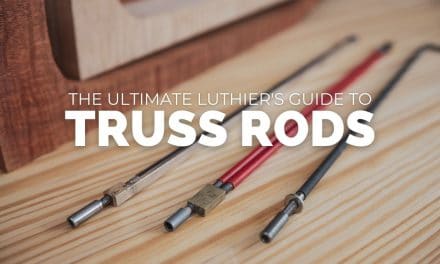

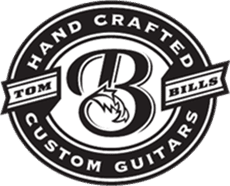
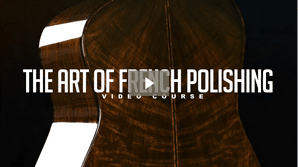

Wonderful information for anyone working with wood or plastic. Thank you for sharing your knowledge and experience!
Thanks Bill!
Loved reading about different glues. If you could answer a question I would be so appreciative. Removed a bridge and part, a good chunk of the sound board came out around the bridge support(first time inexperience). Need to reglue new one and fill cavity around pin holes. Concerned about sound transfer and hold. What would you recommend. Thanks, Jim
Hey Jim, The key is going to be making sure your new filler piece (and then bridge) is a very good tight fit. Try to fill the missing material with wood rather than any type of glue if you can. Then you can use hide glue if you are OK (and the glue joints are tight enough) with that or just use Original Tightbond which is a little more forgiving. Some of the luthier glues like the ones I linked to from LMI above can also be good choice if you want to give that a try and you need some extra humidity resistance which they provide. But at the end of the day it is really more about getting a great fitting joint, that is the key step to a good sounding and stable glue joint.
Excellent article…thank you! I do have a question I hope you might have a recommendation for me. I have an old Vintage Silverton 1448 and my grandson broke it by accident. The prices for replacing look crazy so I thought I might try and glue it. The head split around the tuning pegs and I would like your opinion as to what the best glue to use. The hot glue sounds a bit to difficult for me to work with so I was thinking the Titebond Hide Glue in the bottle or the Titebond Original Glue. But your article also mentioned Norland High Tack Fish Glue. Please advise!
Hi Jack, fixing a head stock is tricky because it is an inherent weak spot in the design of a guitar. I usually use the Super Bond epoxy I talked about in the guide for structural stuff like this. It has great working time and is crazy strong.
Hi Jack just wondering what you would recommend for glueing a neck to a solid body like a Gibson sg
Thanks Joe R
This might be a little controversial, but a trick I learned from my mentors a long time ago was to use a special kind of epoxy called Super Bond made by Fiberglass Coatings down in Florida. It’s pretty amazing stuff and I use for lots of parts of the guitar. It has a wonderful sound to it (yes each type of glue gives a different sound characteristic to the joint – as if you needed more things to factor in! 🙂 The link and more info on Super Bond epoxy is up above in the luthier glue article. Hope that helps!
Thank You So Much For This Informative Article..
I Want Your Favor To Stick My Guitar’s Bridge. It needs Reglueing. What Kind Of Glue can I Use For Proper Adhesion?
excellent article! I am interested in buying this one article only.Is there an option for that? I dont have the money to become a member for only one article…maybe i can but just this one? thanks.
So much information so much to learn. I’ve a big problem. I have a vintage 6 string acoustic I was in its case in a closet in a house fire. Scary stuff. The neck has separated from the body. Not comply but it sure can’t be played. Which glue do you recommend for this type of problem?
Your advice would be greatly appreciated. I’m too old to start a new career. I’ve rebuilt lots of pianos though
Thank you!
Patricia
Hi Patrica, The fact that the guitar survived at all is amazing. And if the only damage was the neck joint, that isn’t so bad really. The neck will most likely need to be completely removed, refit, and reglued. Because it is a vintage instrument, the most common glue would be Hot Hide Glue (not the liquid kind) or Tightbond glue. There are other, more modern options, but those are the most common for that type of repair on a vintage instrument.
Choosing the right glue is critical in guitar building, and your guide provides a wealth of information. The detailed insights into various glues and their applications are invaluable for both beginners and experienced luthiers. Your expertise shines through in simplifying a complex decision-making process.